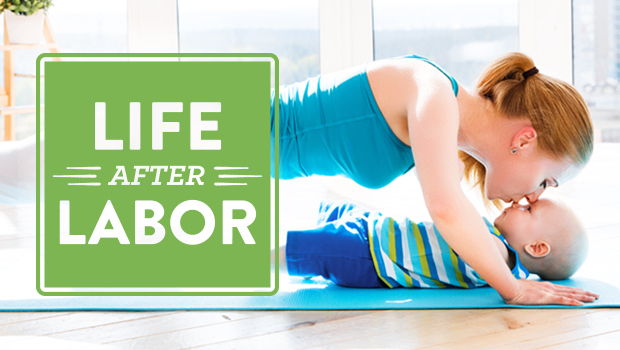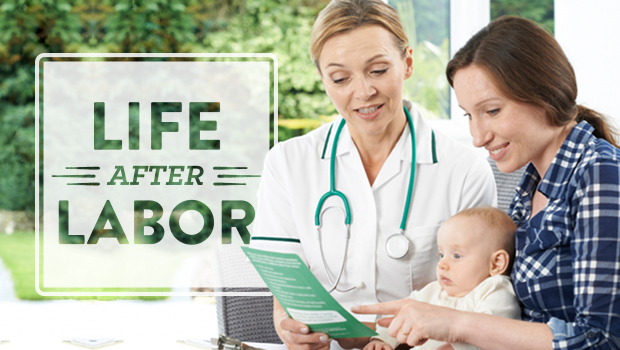
Exercising after having a baby requires some planning and preparation . This is not the time to go out and start training for a marathon or even your first 5K run. This is a time to take take things slowly and gradually, especially if you did not exercise during your pregnancy. Before beginning any postpartum exercise or physical activity, it is important to get clearance from your health care provider. Women heal at different rates.
If you had a cesarean section birth or you had a repair from a tear or an episiotomy, your recovery time will be longer than those mothers who did not have these procedures. Other factors that affect healing time include: your general state of health, nutritional status, and other obligations such as how many children you are caring for. All mothers will need time to recover from the birth, her uterus returning to pre-pregnancy size, the effects of relaxin (the hormone that softens cartilage and ligaments to prepare the body for birth- which can leave you with weak joints until it decreases), a weak pelvic floor and healing of the location where the placenta was attached. You should not start any exercise routine until your bleeding stopped for at least 5 days (1).
Once you are cleared to begin exercising: START SLOWLY. Begin with postpartum exercises that focus on core strengthening and very low impact activities such as: walking, walking in water/swimming, pelvic tilts, kegels , planking, and light weight training. Aim for 20 minutes 2-4 times weekly (2). You may increase the pace and intensity gradually over the first few months as your body allows.
A sample workout could be to warm up for 5 minutes, low impact exercise for 10 minutes then cool down for 5 minutes. Make sure to stay hydrated- a good rule is to drink half your weight in ounces of water daily. Eat a healthy diet with protein and fruits and vegetables and plant-based fats that will help with the healing process and provide the nutrients you need to support your body while you exercise. If you are breastfeeding, nurse your baby or pump just prior to your work-out and wear a supportive bra, add extra calories (about 500 calories daily) and drink an extra quart of water daily.
Many mothers include their baby in their workout. Placing your baby in a baby carrier or stroller can add extra weight to enhance the effects of your workout. If you have older children, going to a park and allowing them to play while you walk around the park may be an option.
Other mothers may want to exercise without their children present or with other women so the have adult social time or some much needed “me time”. It is important to choose options for exercise that are easiest for you to stay with. If you make a plan to go to the gym four times weekly but that requires getting a baby sitter and driving 30 minutes each way, that plan make not work easily and sets you up to skip work outs or quit. Also include variety in your exercise plan.
Doing the same routine at each work out becomes monotonous and boredom may cause you to quit. It also works the same muscle groups over and over and ignores other muscle groups. Plan out various exercises that allow you to work different muscle groups at different work outs. This prevents boredom and each muscle group gets a work out and recovery period.
Signs that you are doing too much:
- Your bleeding returns
- Having pain during exercising
- Exhaustion
- Muscles that feel shaky during exercise
- Moderate to severe muscle soreness the next day (mild soreness is normal)
- Mild supply decreases
Benefits of postpartum exercise:
- Improved cardiac fitness
- Toning of abdominal muscles
- Strengthening pelvic floor
- Better sleep
- Decrease stress level
- Decrease in Baby Blues
- Pregnancy weight loss (3)
As stamina and muscle strength improves, you can gradually increase the length of your work outs and the frequency. Some ways to do this include: adding hand held weights while you walk, increasing the number of times weekly or length of each individual work out. You may start to do some light jogging in short intervals during your walking session. Jogging strollers make it easy to include your baby in this postpartum exercise. Add jugs of water to carry if exercising in a swimming pool to increase the resistance.
Postpartum exercise can provide you with many benefits and is worth the effort. To be successful, set small attainable goals and build on them as you gain back strength and tone. The benefits are not just to get back a pre-baby body but to stay healthy and these benefits can last a lifetime.
Sources:
- www.fitpregnancy.com
- www.acog.org
- www.mayoclinic.org




Comments
Comments are closed here.